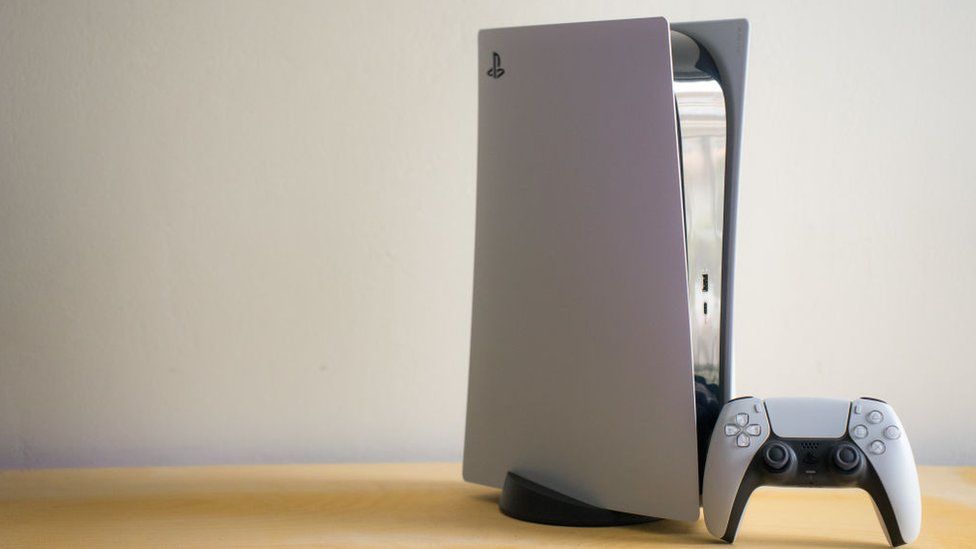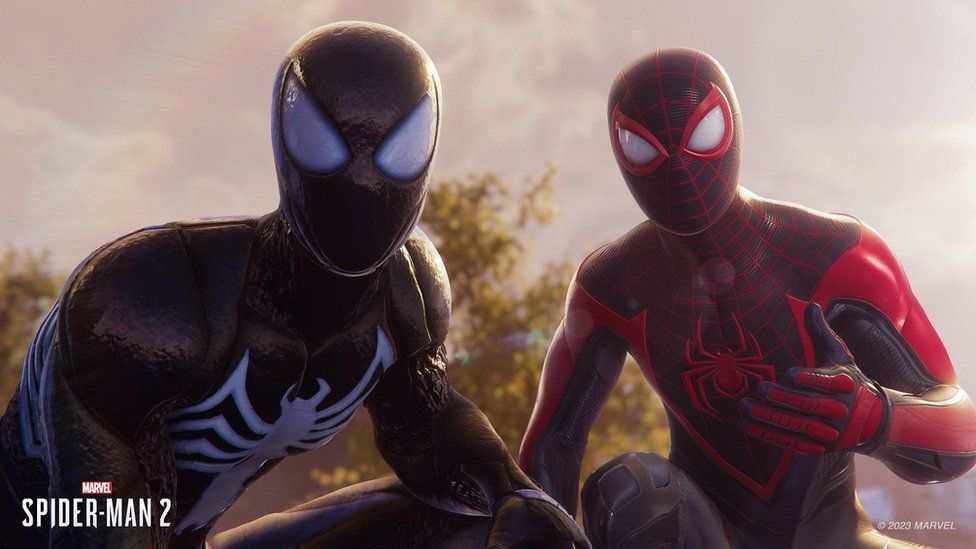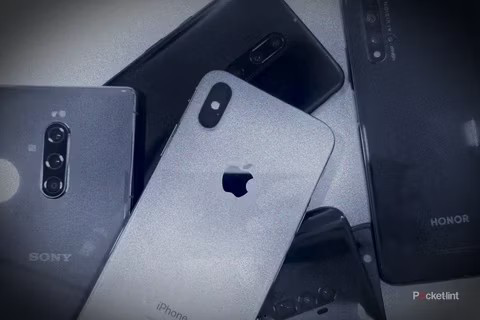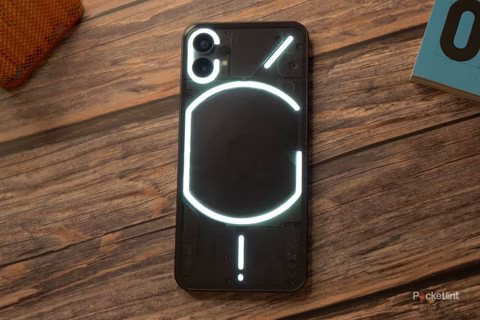Thursday, June 29, 2023
iPhone 14 Plus vs. iPhone 14 Pro Max
Sunday, June 4, 2023
The future smartphones of 2023
The future smartphones of 2023
The cutting edge of tech is the smartphone - and here are all the exciting phones from the likes of Apple, Samsung, Google and more.
With the pace of smartphone evolution moving so fast, there's always something waiting in the wings. No sooner have you spied the latest handset, that there's anticipation for the next big thing. Here we look at those phones that haven't yet launched, the upcoming phones for 2023. We'll be updating this list on a regular basis, with those device rumours we think are credible and exciting. As for already-launched handsets, we've rounded up the best smartphones of 2023 elsewhere - those we consider to be the best across all platforms. If your budget is a little smaller, there is also our budget smartphones - and there's a mid-range roundup up, as well.The upcoming generation of phones
Before we dive into the detail, here are some of the anticipated handsets for 2023 and beyond:- Google Pixel Fold
- Huawei Mate X3
- OnePlus V Fold and V Flip
- Vivo X Flip
- Nothing Phone (2)
- iPhone 15 and 15 Pro
- Galaxy Z Fold 5
- Samsung Galaxy Z Flip 5
- Google Pixel 7a
- Google Pixel G10/Pixel 7 Ultra
- Motorola Razr(s) 2023
- Xiaomi Mix Fold 3
- New Microsoft Surface foldable
Google Pixel Fold
Google hasn't confirmed this one, but the rumours surrounding the foldable pixel have been circling for a long time.Rumours of the folding Google Pixel have been around since 2019, and the company still hasn't launched one or even confirmed that there's a release any time in the near future. Recent news on the device suggests Google isn't happy with it and has delayed its launch. It is expected to be a book-style foldable like the Galaxy Z Fold 4, but more compact. Over the first few months of 2023, we saw a number of fresh rumours surrounding the device, including some detailed renders, and a possible sighting on a New York subway.Huawei Mate X3
The Mate XS 2 was launched in 2022 and the Mate X3 is predicted to follow soon.OnePlus V Fold and V Flip
At its OnePlus 11 and Buds Pro 2 launch event, the manufacturer teased the upcoming launch of its first foldable phone(s), which are going to be launched in the third quarter of 2023. It's been rumoured that - like its parent company, Oppo, it will launch both horizontal and vertical (flip) style foldable smartphones. Beyond that, we don't know a huge amount, but it's safe to assume that they'll be tweaked versions of the Oppo Find N2 and Find N2 Flip.Vivo X Flip
Like its cousin brands - OnePlus and Oppo - Vivo is expected to enter its own clamshell foldable to the smartphone market this year. A little like the Oppo Find N2 Flip, it has a large cover screen on the exterior, except it's landscape-oriented and not arranged vertically, dominating the top half of the front cover.Nothing Phone (2)
Nothing - Carl Pei's relatively new company - has announced that it intends to expand into the US, and that will include the second generation Nothing Phone. The company has also confirmed that - unlike its first model - this phone is going to be powered by a flagship-grade chipset. Specifically, that's going to be the Snapdragon 8+ Gen 1 platform, not the newer Snapdragon 8 Gen 2. It's expected to launch in the second half of 2023.Apple iPhone 15 range
As surely as night follows day, Apple releases a new range of iPhones every year. iPhone 14 have just launched, and that means next year we'll see iPhone 15.Despite iPhone 14 still being a new device, rumours about the next generation iPhone 15 have already started. Apple has already confirmed the move from Lightning to USB-C, while other rumours speculate that Apple will move from physical buttons to solid-state/haptic buttons, and further leaks suggest a move to 120Hz displays for all models. The next models will almost certainly land in September/October 2023.Pixel G10/Pixel 7 Ultra
The Pixel G10 is a bit of a mystery device, in that all we've heard is that it's in the works and that has the same display as the 7 Pro.Following rumours of the Pixel 7a series, another unannounced Pixel device broke cover. The Pixel G10 has been discovered, but it seems no one really knows what it is. It's supposed to feature a large 6.7-inch QuadHD display - like the Pixel 7 Pro - and it could be the Pixel 7 Ultra, but we're unsure on this one.Google Pixel 7a 'family'
Almost as soon as the Pixel 7 was announced, the 7a series was teased on Amazon.In something of a surprising move, Amazon offered up pre-registration for the 'Google Pixel 7a family' almost as soon as the Pixel 7 and 7 Pro were launched. Since then, we've got a better glimpse at the full picture of this phone. It's said to feature a 6.1-inch 90Hz display, feature a design reminiscent of the Pixel 7, and a dual camera system. It's also said to feature the same second gen Tensor processor from Google.Samsung Galaxy Z Fold 5
Rumours have already started up for Samsung's next foldable flagship, and it's sounding a lot like Samsung has taken onboard criticism and is addressing a couple of consumer pain points. One of those is the crease on the display. It's been suggested that the next model will feature a droplet curve in the display to avoid that easily visible, distinct crease and remove the gap when closed. Some rumours have even suggested we could see a silo for the S Pen built into the frame of the phone, but more recent suggestion states that isn't the case, so it's a bit of an unknown.Samsung Galaxy Z Flip 5
It would be incredibly unusual for Samsung to release a new Z Fold, without the accompanying clamshell Z Flip, so we're also expecting the company to launch the new Z Flip 5 alongside it. Cover displays seem to be something of a focus this year for most manufacturers, and it's been rumoured that Samsung's new Flip will have a much larger cover screen taking up nearly all the space on the front cover of the phone.Motorola Razr(s) 2023
Xiaomi Mix Fold 3
Microsoft Surface foldable
Having tried two generations of Surface Duo - with two screens that fold shut - it's been said that Microsoft has shelved plans for a third generation and is, instead, working on a phone with one large foldable screen instead. If so, it could see the Microsoft Surface foldable work more like a Samsung Galaxy Z Fold, and not a two-screened smartphone with a hinge.Saturday, May 27, 2023
PlayStation Showcase 2023
PlayStation Showcase 2023: Spider-Man 2 impresses.

Sony's given fans a glimpse of some big upcoming games at its first PlayStation Showcase in well over a year.
The livestream is usually reserved for the console-maker's most important, crowd-pleasing releases.
Hype going into the event was huge. Big predictions were made - a Bloodborne remake, The Last of Us: Part 3 and a Twisted Metal update among them.
Spoiler: None of these turned out to be true. And the general reaction seemed to be "underwhelmed".
There was a lack of genuine first-party exclusives, and many of the PlayStation 5 games on display were already known about.
But there were some highlights, as well as the odd "huh" moment.
Spider-Man 2
 IMAGE SOURCE,MARVEL
IMAGE SOURCE,MARVELSave the best until last? Sony seemed to think so - it capped the presentation with 12 minutes of gameplay footage from its sequel to the 2018 PS4 hit.
We saw control switch between Peter Parker in a dark Venom suit - boasting new symbiote powers - and Miles Morales, who got his own PS5 launch game.
The pair were seen swinging through New York in pursuit of Dr Curt Connors, aka the Lizard, while trying to avoid supervillain Kraven's henchmen.
Fans generally seemed impressed, excited by the ability to play as both characters and the promise of a darker story turn thanks to the new black suit.
But the game's existence was already confirmed, and fans had been hoping for news of something new from a Sony studio.
Metal Gear Solid Delta: Snake Eater
 IMAGE SOURCE,KONAMI
IMAGE SOURCE,KONAMIProbably the worst-kept secret of the night - rumours had been swirling that a remake of PlayStation 2 classic Metal Gear Solid 3 was on the cards.
And when the brief trailer ended with a glimpse of hero Solid Snake it was finally confirmed.
The game, which will also be on Microsoft's Xbox Series X/S consoles, doesn't have a release date yet.
Sony also announced that the first three Metal Gear Solid games will be released as the Master Collection: Volume 1, later this year.
There was no mention of a Metal Gear Solid 4 re-master - long-wished for by fans, but some suggested it might feature in a volume two.
Some were concerned that series creator Hideo Kojima, who left developer Konami on bad terms, won't be involved in the re-releases.
source: BBC
Tuesday, May 16, 2023
High-tech face mask lets you smell things in virtual reality
High-tech face mask lets you smell things in virtual reality.
A face mask can release nine different scents on demand to make VR experiences more immersive and multisensory.
A face mask designed to enhance virtual reality can release various smells to make the simulation more immersive. It could even be used to mimic the odour of absent loved ones during virtual meetings, say its creators.
The senses of sight, sound and touch are all commonly catered for by virtual reality systems, but smell isn’t usually despite its important role in day-to-day life and in forming and recalling memories.Xinge Yu at City University of Hong Kong says earlier smell generators were large, “clumsy” devices, which leaked odour throughout a large area and were sluggish to switch from scent to scent.
His team has created two devices that can release odours on demand. One is a flexible patch around 5 centimetres long mounted on the upper lip containing two cells, each with the ability to release one scent. The other is a face mask with a grid of nine different smells, which can also be combined to create other odours. Each device is controlled by a small chip that communicates with computers wirelessly via Bluetooth to coordinate the release of smells as the wearer nears an odorous object in VR.The smells are created by liquid perfumes added to containers of paraffin. When a smell is needed, the cell is heated to 50°C (122°F) with a small radiator. Because both devices are close to the nose, wearers can detect the scents within 1.5 seconds of them being switched on.
In an experiment with the face mask, 11 volunteers were able to detect different odours, including mint, jasmine, lavender and pineapple, with an average success rate of 93 per cent.Yu says the system can make virtual reality more convincing, but could also be used to make people in different places feel closer to each other.
“By wearing the olfaction system, children could sense their absent families’ odour, and separate couples could feel each other by smelling their odours,” he says. “In terms of entertainment, users could experience various outdoor environments with different nature smells at home by VR. We think bad smells can be used as easily as pleasant smells.”
source:www.newscientist.com
Sunday, May 14, 2023
Future technology
Future technology: 22 ideas about to change our world.
The future is coming, and sooner than you think. These emerging technologies will change the way we live, how we look after our bodies and help us avert a climate disaster.
Technology moves at a relentlessly fast pace in the modern world. It can sometimes feel like every single day there are new technologies and innovations that will change our futures forever. But in a steady stream of announcements about new massive futuristic technological upgrades and cool gadgets, it is easy to lose track of the amazing ways the world is progressing.
For instance, there are artificial intelligence programs writing poems from scratch and making images from nothing more than a worded prompt. There are 3D-printed eyes, new holograms, lab-grown food and brain-reading robots.
All of this just scratches the surface of what is out there, so we've curated a guide to the most exciting future technologies, listing them all below.
Sand batteries
Not every technology bettering our future has to be complicated, some are simple, yet extremely effective.
ChatGPT, creating poems from scratch, explaining complex theories with ease and having full-length conversations like it is a human.
ChatGPT is powered by a software known as GPT-3, trained on billions of examples of texts, then taught how to form coherent and logical sentences.
ChatGPT is an example of AI and its future. It has proven its ability to make completely new websites from scratch, write entire length books and even make jokes... although, it clearly still hasn't mastered humour yet.
Boom-free supersonic flight

NASA’s X-59 ‘quiet’ supersonic aircraft is set to take to the skies for its first test flight at the Armstrong Flight Research Center later this year. The plane is currently being assembled in a hangar at Lockheed Martin’s Skunk Works facility in Palmdale, California.
Its fuselage, wings and tail have been specially designed to control the airflow around the plane as it flies, with the ultimate aim of preventing a loud sonic boom from disturbing people on the ground below when it breaks the sound barrier. If the initial test goes to plan, the space agency aims to carry out further test flights over inhabited areas to gauge the public’s response to aircraft in 2024.
Self-healing 'living concrete'

Scientists have developed what they call living concrete by using sand, gel and bacteria.
Researchers said this building material has structural load-bearing function, is capable of self-healing and is more environmentally friendly than concrete – which is the second most-consumed material on Earth after water.
The team from the University of Colorado Boulder believe their work paves the way for future building structures that could “heal their own cracks, suck up dangerous toxins from the air or even glow on command”.
Fuel from thin air
Chemical engineers from Switzerland’s École Polytechnique Fédérale de Lausanne have created a prototype device that can produce hydrogen fuel from the water found in air.
Inspired by leaves, the device is made from semiconducting materials that harvest energy from sunlight and use it to produce hydrogen gas from water molecules found in the atmosphere. The gas could then, potentially, be converted for use as liquid fuels.
Internet for everyone

We can’t seem to live without the internet (how else would you read sciencefocus.com?), but still only around half the world’s population is connected. There are many reasons for this, including economic and social reasons, but for some the internet just isn’t accessible because they have no connection.
Google is slowly trying to solve the problem using helium balloons to beam the internet to inaccessible areas, while Facebook has abandoned plans to do the same using drones, which means companies like Hiber are stealing a march. They have taken a different approach by launching their own network of shoebox-sized microsatellites into low Earth orbit, which wake up a modem plugged into your computer or device when it flies over and delivers your data.
Their satellites orbit the Earth 16 times a day and are already being used by organisations like The British Antarctic Survey to provide internet access to very extreme of our planet.
3D-printed eye tissue
Researchers at the National Eye Institute in the US have produced retinal tissue using stem cells and 3D bioprinting. The new technique may help scientists model the human eye to better understand – and develop treatments for – diseases and conditions that affect people’s vision, such as age-related macular degeneration (AMD).
The researchers created tissue found in the outer blood-retina barrier, which is the area AMD is known to start in, by printing stem cells taken from patients into a gel and allowing them to grow over several weeks. They are currently using the tissue to study the progression of AMD and are experimenting with adding additional cell types to model more of the human eye.
Car batteries that charge in 10 minutes

Fast-charging of electric vehicles is seen as key to their take-up, so motorists can stop at a service station and fully charge their car in the time it takes to get a coffee and use the toilet – taking no longer than a conventional break.
But rapid charging of lithium-ion batteries can degrade the batteries, researchers at Penn State University in the US say. This is because the flow of lithium particles known as ions from one electrode to another to charge the unit and hold the energy ready for use does not happen smoothly with rapid charging at lower temperatures.
However, they have now found that if the batteries could heat to 60°C for just 10 minutes and then rapidly cool again to ambient temperatures, lithium spikes would not form and heat damage would be avoided.
The battery design they have come up with is self-heating, using a thin nickel foil which creates an electrical circuit that heats in less than 30 seconds to warm the inside of the battery. The rapid cooling that would be needed after the battery is charged would be done using the cooling system designed into the car.
Their study, published in the journal Joule, showed they could fully charge an electrical vehicle in 10 minutes.
Artificial neurons on silicon chips

Scientists have found a way to attach artificial neurons onto silicon chips, mimicking the neurons in our nervous system and copying their electrical properties.
“Until now neurons have been like black boxes, but we have managed to open the black box and peer inside,” said Professor Alain Nogaret, from the University of Bath, who led the project.
“Our work is paradigm-changing because it provides a robust method to reproduce the electrical properties of real neurons in minute detail.
“But it’s wider than that, because our neurons only need 140 nanowatts of power. That’s a billionth the power requirement of a microprocessor, which other attempts to make synthetic neurons have used.
Researchers hope their work could be used in medical implants to treat conditions such as heart failure and Alzheimer’s as it requires so little power.
















